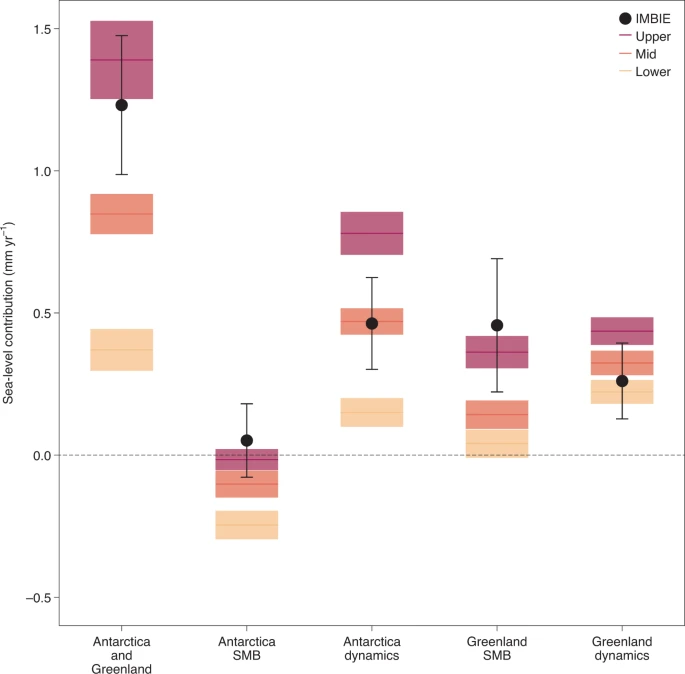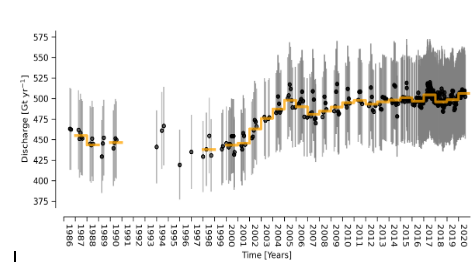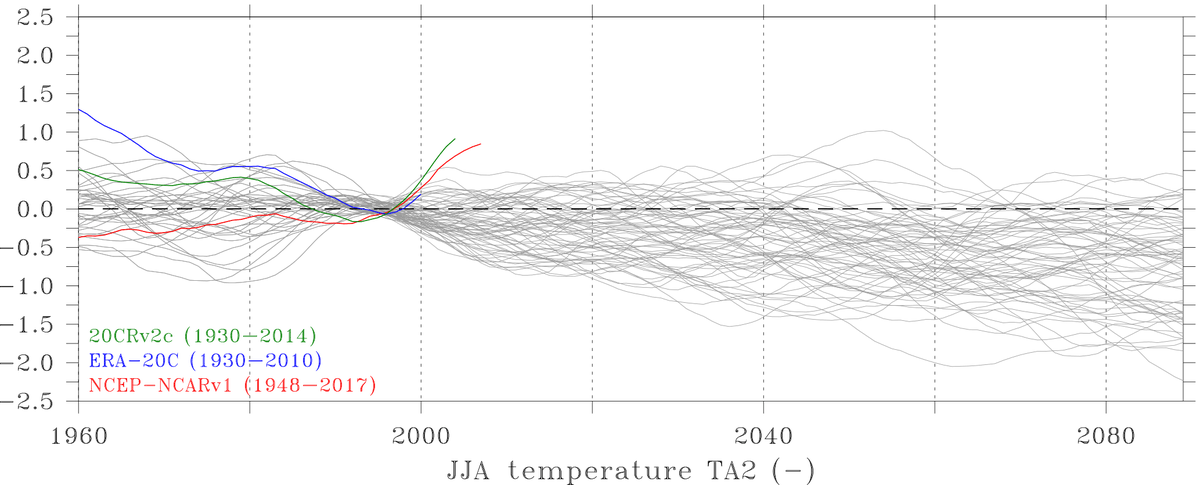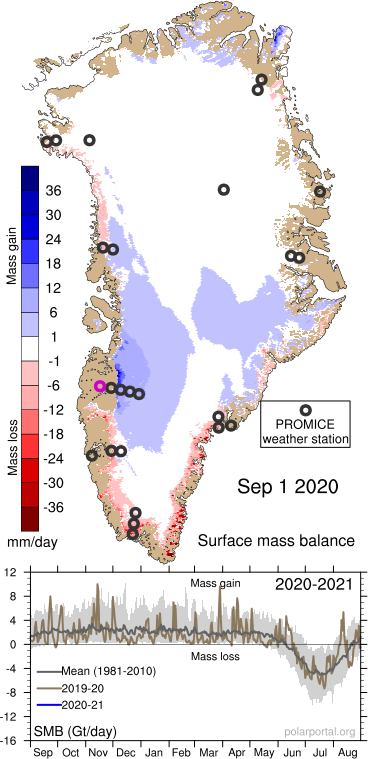So on Monday this paper  https://abs.twimg.com/emoji/v2/... draggable="false" alt="👇" title="Rückhand Zeigefinger nach unten" aria-label="Emoji: Rückhand Zeigefinger nach unten"> came out showing ice sheets were losing ice at a rate equivalent to the high end scenario in @IPCC_CH #AR5. Here is a brief
https://abs.twimg.com/emoji/v2/... draggable="false" alt="👇" title="Rückhand Zeigefinger nach unten" aria-label="Emoji: Rückhand Zeigefinger nach unten"> came out showing ice sheets were losing ice at a rate equivalent to the high end scenario in @IPCC_CH #AR5. Here is a brief  https://abs.twimg.com/emoji/v2/... draggable="false" alt="🧵" title="Thread" aria-label="Emoji: Thread"> on what it means, what we can and can& #39;t say and how scientists will now try to reduce uncertainty on #SeaLevelRise https://twitter.com/ruth_mottram/status/1300457131095793664">https://twitter.com/ruth_mott...
https://abs.twimg.com/emoji/v2/... draggable="false" alt="🧵" title="Thread" aria-label="Emoji: Thread"> on what it means, what we can and can& #39;t say and how scientists will now try to reduce uncertainty on #SeaLevelRise https://twitter.com/ruth_mottram/status/1300457131095793664">https://twitter.com/ruth_mott...
In our paper we show this figure. Note this is only the #IceSheet contribution to #SeaLevel, small #glaciers and ice caps still contribute more than either #Greenland or #Antarctica but together the cryosphere now contributes more than thermal expansion of the #Oceans
Ice sheet contribution to #SeaLevel comes from both #SurfaceMassBalance - budget of snowfall minus snow/ice melt - AND #IceDynamics - #Iceberg calving + submarine melting. It looks like models underestimate SMB losses in both #Greenland + #Antarctica but dynamics also important
Although #Greenland is much smaller #IceSheet than #Antarctica, 60% of the sea level rise contribution comes from there (Results are based on #IMBIE2, you can see that West Antarctica dominate the Antarctic contribution )
https://www.nature.com/articles/s41586-018-0179-y">https://www.nature.com/articles/... https://www.nature.com/articles/s41586-019-1855-2">https://www.nature.com/articles/...
https://www.nature.com/articles/s41586-018-0179-y">https://www.nature.com/articles/... https://www.nature.com/articles/s41586-019-1855-2">https://www.nature.com/articles/...
The acceleration in #Greenland ice sheet losses has resulted partly from ice dynamics accelerating in the 2000s as @mankoff showed beautifully here. But also from an increase in melt and runoff that is also partly helping to drive the speed-up of these glaciers
In Antarctica, a lot of focus has been on the ocean interface on #glaciers like @ThwaitesGlacier and @AntarcticPIG where large amounts of icebergs and submarine melt occur e.g. https://twitter.com/adrian_luckman/status/1298199255308480512">https://twitter.com/adrian_lu...
The trouble is we& #39;re underestimating melt in summer in #Greenland in #ClimateModels as persistent high pressure blocking is not well represented in models (they get the system, they don& #39;t always get the persistence) e.g. this by @xavierfettweis + Ed Hanna
And in the oceans, observations of ice sheet melt underneath ice shelves are in their infancy - it& #39;s an extreme environment and difficult and dnagerous to access.
So, what next? Well, as @AimeeSlangen tweeted yesterday, the EU have called in the "A-team". A large group of #climate and #ice scientists will work together over the next 4 years on the #PROTECT_H2020 project to improve models + observations of #IceSheets https://twitter.com/AimeeSlangen/status/1300793428243107852">https://twitter.com/AimeeSlan...
The aim is to not just improve absolute #SeaLevelRise but also local estimates + to find out why your local sea level rise is not the same as the global mean try this by @GlacierBytes @AGrinsted @IceSheetMike + @climate_ice on @sciencenordic https://sciencenordic.com/climate-change-denmark-forskerzonen/the-mind-bending-physics-of-scandinavian-sea-level-change/1452094">https://sciencenordic.com/climate-c...
So to find out more about #PROTECT_H2020 keep watching this space and if you& #39;re curious about how the Greenland ice sheet is doing remember to check out @PolarPortal
A new surface mass balance year just started.
/Fin
A new surface mass balance year just started.
/Fin

 Read on Twitter
Read on Twitter








